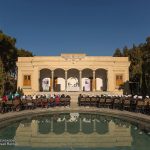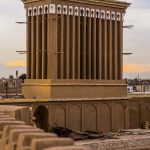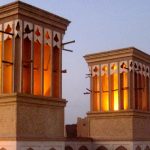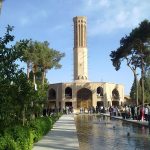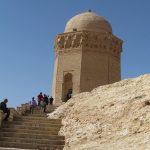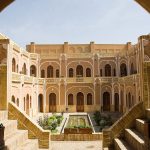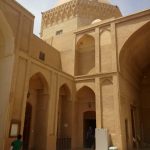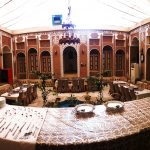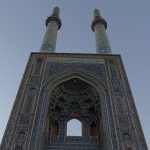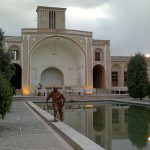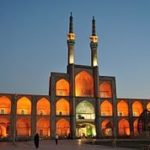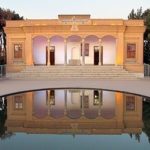YAZD
YAZD HISTORY
Yazd County. For the village in Khuzestan Province,
یزد
Yazd (Persian: یزد, /jæzd/ (help·info)), formerly also known as Yezd,is the capital of Yazd Province, Iran. The city is located 270 km (170 mi) southeast of Esfahan. At the 2011 census, the population was 486,152.Since 2017, the historical city of Yazd is recognized as a World Heritage Site by UNESCO.
Because of generations of adaptations to its desert surroundings, Yazd has a unique Persian architecture. It is nicknamed the “City of Windcatchers” (Persian: شهر بادگیرها Shahr-e Badgirha) from its many examples. It is also very well known for its Zoroastrian fire temples, ab anbars, qanats, yakhchals, Persian handicrafts, handwoven cloth (Persian termeh), silk weaving, Persian Cotton Candy, and its time-honored confectioneries.
History
The name is derived from Yazdegerd I, a Sassanid ruler of Persia. The city was definitely a Zoroastrian center during Sassanid times.[citation needed]After the Arab conquest of Iran, many Zoroastrians migrated to Yazd from neighboring provinces. By paying a levy, Yazd was allowed to remain Zoroastrian even after its conquest, and Islam only gradually became the dominant religion in the city.
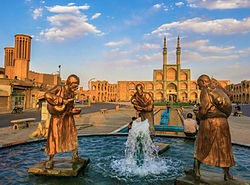
Because of its remote desert location and the difficulty of access, Yazd remained largely immune to large battles and the destruction and ravages of war. For instance, it was a haven for those fleeing from destruction in other parts of Persian Empire during the Mongol invasion. In 1272 it was visited by Marco Polo, who remarked on the city’s fine silk-weaving industry. In the book The Travels of Marco Polo, he described Yazd in the following way:
It is a good and noble city, and has a great amount of trade. They weave there quantities of a certain silk tissue known as Yasdi, which merchants carry into many quarters to dispose of. When you leave this city to travel further, you ride for seven days over great plains, finding harbour to receive you at three places only. There are many fine woods producing dates upon the way, such as one can easily ride through; and in them there is great sport to be had in hunting and hawking, there being partridges and quails and abundance of other game, so that the merchants who pass that way have plenty of diversion. There are also wild asses, handsome creatures. At the end of those seven marches over the plain, you come to a fine kingdom which is called Kerman.
Yazd briefly served as the capital of the Muzaffarid Dynasty in the fourteenth century, and was unsuccessfully besieged in 1350–1351 by the Injuids under Shaikh Abu Ishaq. The Friday (or Congregation) mosque, arguably the city’s greatest architectural landmark, as well as other important buildings, date to this period. During the Qajar dynasty (18th century AD) it was ruled by the Bakhtiari Khans.
Under the rule of the Safavid (16th century), some people migrated from Yazd and settled in an area that is today on the Iran-Afghanistan border. The settlement, which was named Yazdi, was located in what is now Farah City in the province of the same name in Afghanistan. Even today, people from this area speak with an accent very similar to that of the people of Yazd.
One of the notable things about Yazd is its family-centered culture.[citation needed] According to official statistics from Iran’s National Organization for Civil Registration, Yazd is among the three cities with the lowest divorce rates in Iran.
Demographics
Language and ethnic groups
The majority of the people of Yazd are Persians, and they speak Persian with Yazdi accent different from Persian accent of Tehran; but there are also small populations of other Iranian ethnicities in the city such as Azerbaijanis and Qashqais who speak Persian as their second language.
Religion
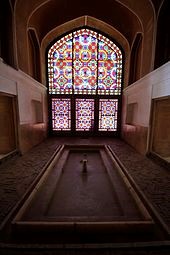
The Majority people in Yazd are Muslims. There is also a sizable population of Zoroastriansin the city. There was once a relatively large Jewish-Yazdi community, however, after the creation of Israel, many have moved there for varying reasons. Former president of Israel Moshe Katsav is an example.
The Pir-e-Naraki[7] sanctuary is one the important pilgrimage destinations for Zoroastrians where an annual congregation is held and frequent visits are made during the year; it is now also a famous tourist spot.
The story of the last Persian prince to come to Yazd before the arrival of Islam adds to its importance. Such a transformation has occurred several times.
Several other city traditions are the Muslim parades and gatherings, which are mainly processions called azadari held to commemorate the events experienced by the main Islamic martyrs and other important figures. These huge public gatherings created a series of spaces which, since most are near important urban monuments, are used at other times as hubs from which visitors can tour the main spots in the city .
Historical sites
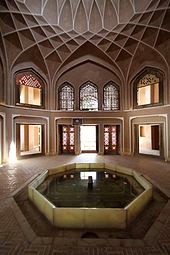
Yazd is an important centre of Persian architecture. Because of its climate, it has one of the largest networks of qanats in the world, and Yazdi qanat makers are considered the most skilled in Iran.
To deal with the extremely hot summers, many old buildings in Yazd have magnificent wind towers, and large underground areas.
The city is also home to prime examples of yakhchals, which were used to store ice retrieved from glaciers in the nearby mountains. Yazd is also one of the largest cities built almost entirely out of adobe.
Yazd’s heritage as a center of Zoroastrianism is also important. There is a Tower of Silenceon the outskirts, and the city itself has an ateshkadeh which holds a fire that has been kept alight continuously since 470 AD. Presently, Zoroastrians make up a significant minority of the population, around 20,000–40,000 or 5 to 10 percent.
Built in 12th century and still in use, Jame Mosque of Yazd is an example of the finest Persian mosaics and excellent architecture. Its minarets are the highest in the country.
|
|
|
| -18(°C) | |
| Wind | (mph) |
| Pressure | (in) |
| Visibility | (mi) |
| UV Index | - |
| Humidity | (in) |


